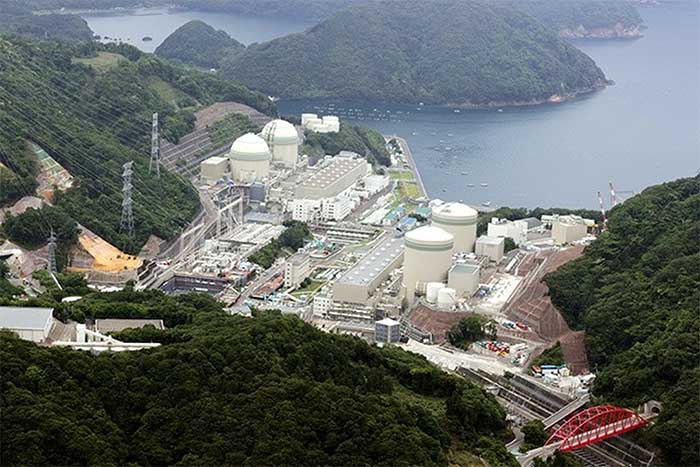Shortly after Japan experienced a powerful earthquake measuring 7.6 on the Richter scale, various international nuclear agencies and organizations expressed concern over the risk of radiation leaks from nuclear reactors.
On January 1, at 4:10 PM local time, a 7.6 magnitude earthquake struck Ishikawa Prefecture, affecting several central provinces in Japan. The epicenter was located at a depth of 10 km.

Buildings collapsed and roads damaged in Kanazawa, Ishikawa Prefecture after the earthquake. (Photo: Reuters).
Many buildings were either collapsed or caught fire, roads were damaged, and over 100,000 people were ordered to evacuate from the affected areas.
Following the earthquake, international agencies and the Japanese public expressed concerns about the risk of radiation leaks, reminiscent of the incident at the Fukushima Nuclear Power Plant in 2011.
The Nuclear Regulation Authority of Japan (NRA) reported that there were currently no abnormalities detected at nuclear power plants following a series of strong earthquakes in Japan and a tsunami warning.
The NRA stated that the reactors at the Ohi and Takahama nuclear power plants operated by Kansai Electric Power Company in Fukui Prefecture (north of the main earthquake site in Ishikawa) appeared to be unaffected by the quake.
Ohi Nuclear Power Plant has two operational units, while Takahama has four. Both are located in the region impacted by the recent earthquake along Japan’s west coast.
Meanwhile, the Shika Nuclear Power Plant, which consists of two reactors operated by Hokuriku Electric Power Company, is situated approximately 250 km north of Ohi and near the epicenter of the 7.6 magnitude earthquake. It has been non-operational since the Fukushima disaster in 2011. The agency also reported no abnormalities following the earthquake.
Currently, nuclear power plants in areas affected by the recent earthquake and tsunami in Japan do not pose a risk of radiation leaks.

Takahama Nuclear Power Plant is one of three plants in the region affected by the earthquake, but there have been no reports of damage or incidents. (Photo: Asahi).
The International Atomic Energy Agency (IAEA) stated that they have contacted Japan, and the NRA confirmed that there are no abnormalities at nuclear power plants in the affected area.
“IAEA will continue to monitor the situation,” a statement from the agency said.
According to the Japan Meteorological Agency, on January 1, the country experienced 21 earthquakes with magnitudes of 4.0 or higher in central Japan within just 90 minutes.
The strongest earthquake occurred in Ishikawa Prefecture at 4:10 PM local time, measuring 7.6 on the Richter scale.
Residents along the west coast were urged to evacuate to higher ground due to the risk of a tsunami.
After the major earthquake in northeastern Japan in March 2011, a tsunami measuring 15 meters high caused a power outage and led to radiation leaks from three reactors at the Fukushima-Daiichi Nuclear Power Plant, resulting in one of the largest nuclear disasters in history.
All nuclear reactors in the country’s power plants were shut down following the Fukushima accident Fukushima-Daiichi and cannot be restarted until they pass new, stringent safety inspections.
Japan has 54 nuclear power plants, which generate 30% of the country’s electricity consumption.
According to the International Atomic Energy Agency, this figure was reduced to 7.2% in 2021 (as many plants were forced to shut down following the Fukushima nuclear disaster).
Out of 33 nuclear reactors in the power plants across the Land of the Rising Sun, 12 reactors are now back in operation after meeting post-Fukushima safety standards.
The government of Prime Minister Fumio Kishida aims to increase the role of nuclear power generation in efforts to reduce carbon emissions and ensure a stable energy supply for the country.


















































